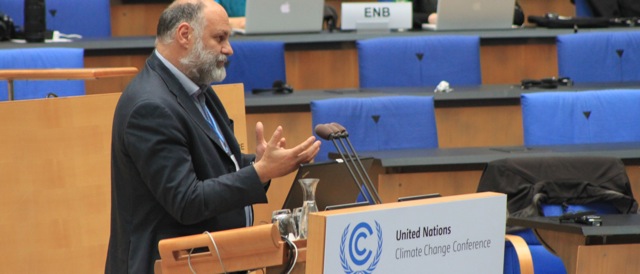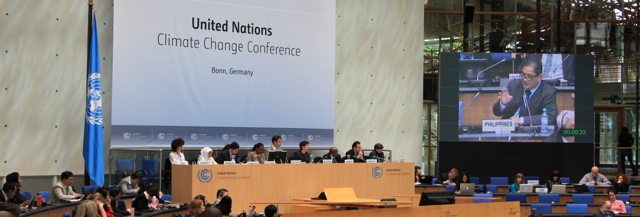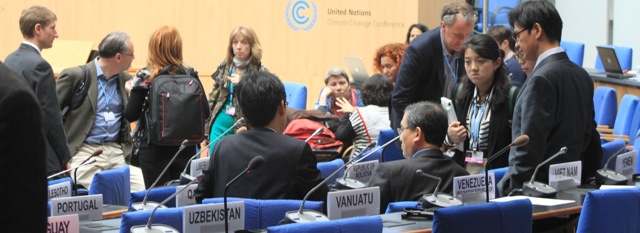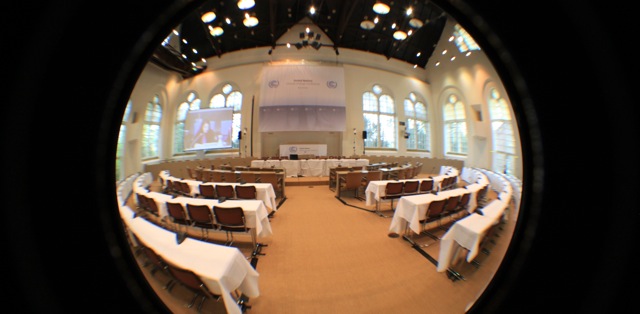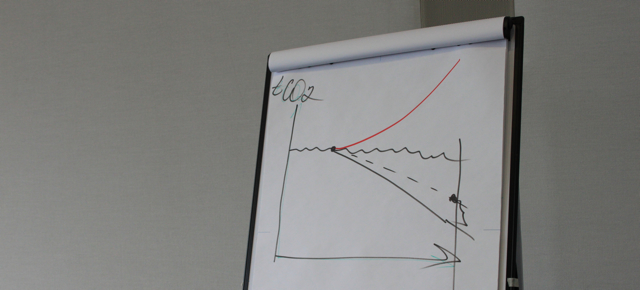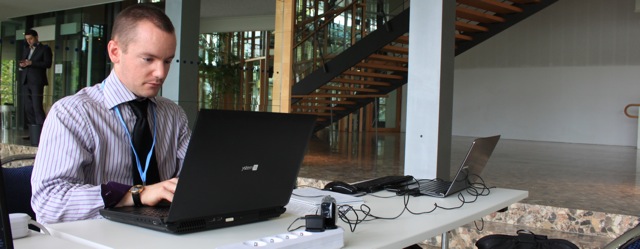Photoblog: Bonn Climate Talks day 3 - No rest for the brave
This photoblog is the third piece of a series providing short reports from the Bonn climate talks. Read the previous photoblog here.
On the third of the climate talks in Bonn, discussions continued on the two main themes of the session: (1) what issues will be included in the global climate agreement expected in 2015 and (2) how to scale up the ambition of mitigation actions in the coming years. The UN climate secretariat organized a three-hours long workshop addressing the opportunities in the land use and farming sector to curb emissions and increase the resilience of local communities.
During the workshop, two experts from Brazil and the Food and Agriculture Organization provided technical input to the delegates (you can access their presentation here). They reminded the audience that soils are the second largest natural sink of carbon and is hence a key in maintaining the balance of our climate. While everyone recognizes the importance of land-use, adopting large scale policies related to the agricultural sector raise many challenges. Negotiators are thus likely to need more discussions to define the role of that the UN climate process could play in this regards.
As always in such an intergovernmental discussion, the most fruitful discussions take place in the corridors and in the empty halls once the formal presentations are over. Due to the more human scale of this session, this session offers perhaps more opportunities for negotiators to engage informally with their colleagues.
Walking into the venue of the climate talks, one can feel the weight of the history that the buildings have witness. The wasserwek building in which some of the roundtables are organized had been used between 1986 and 1992 as the main auditorium of the German federal parliament. It is in this room that the parliament voted the transfer of the German capital city from Bonn to Berlin. If only this story could inspire negotiators to come to an agreement and adopt this week some history-setting milestones in the climate talks…
Many delegates have reminded their colleagues since the beginning of the week on the scale of the actions needed to reach the objective of the climate negotiations: ensure that the footprint of human activities does not unsettle the climate to a dangerous level. As we walked in one of the room for a bilateral meeting with the climate ambassador of one of the key negotiating country, we found a flip charted left aside in a corner and highlighting the emission pathway required to meet this objective. Could this be the first hint of a science-based policy making?
As delegates spent the full day locked in the World Conference Centre of Bonn, the city inhabitants’ enjoyed a public holiday to celebrate the international labour day (see our related blog on the workers and the transition to a low-carbon economy). Civil society delegates also spent the day busy as a bee, here Kyle Gracey working hard to edit the next issue of the ECO Newsletter - the voice of NGOs at the climate talks.




About the author
Sébastien Duyck
Passionate environmental advocate, PhD student (Human Rights and Environmental Governance). Following particularly UNFCCC, UNEP and Rio+20 processes





